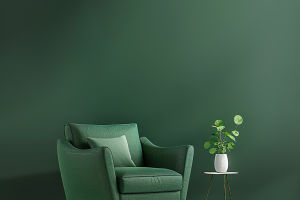Sofa placement plays a vital role in transforming the living room into the heart of the home—a space where family and friends come together to relax, entertain, and create lasting memories.
One of the most important aspects of designing a comfortable and functional living room is deciding where to position the sofa.
As the focal point of the room, the sofa creates a cozy, welcoming seating area for both daily use and special gatherings. Yet, with countless options and factors to consider, finding the ideal spot for your sofa can feel like a challenging decision.
1. Assessing the Space: Understanding Your Room’s Layout
Before deciding on the ideal sofa placement, it’s essential to assess your room’s layout and gain a clear understanding of the space. This step will help you make informed choices about where to position your sofa for optimal functionality and aesthetic appeal.
Measure the Room
Begin by measuring the dimensions of your living room, including length, width, and height. Knowing the size of the space allows you to envision how different furniture arrangements will fit. Also, take note of any architectural features like windows, doors, or alcoves, as they can influence where you place your sofa.
Think About Traffic Flow
Next, consider the natural flow of movement within the room. Observe how people move through the space and identify high-traffic areas. It’s important to make sure your sofa placement doesn’t block pathways or create obstacles that might hinder easy movement.
Evaluate Existing Furniture
Take stock of any existing furniture or fixtures in the room. Decide if you’d like to incorporate them into your new sofa arrangement or if you have the flexibility to rearrange them.
2. Focal Point: Positioning the Sofa for Visual Impact
Creating a focal point in your living room is essential for setting the tone and giving the space a sense of direction. When deciding where to place your sofa, think about how it can help enhance or align with the room’s focal point to create a visually balanced and impactful arrangement.
A focal point can be anything from a fireplace or a large piece of artwork to a feature wall or a breathtaking view through a window. Positioning your sofa strategically in relation to the focal point draws attention to the key feature and creates a harmonious, inviting atmosphere.
Consider a Fireplace
If your living room has a fireplace, it’s often a natural focal point. Consider positioning your sofa to face the fireplace or place it at an angle that allows everyone to enjoy its warmth and charm. This not only enhances the cozy atmosphere but also creates a visually balanced arrangement around the fireplace.
Consider a Feature Wall
If your living room features a striking piece of artwork or an eye-catching feature wall, placing the sofa in a way that highlights and complements the design is essential. Position the sofa directly across from the artwork or wall, allowing it to serve as the room’s focal point. This arrangement creates a visually powerful setup, adding depth and interest to the space.
3. Traffic Flow: Ensuring Easy Movement
When arranging your living room, considering traffic flow is just as important as the design and aesthetics. A well-thought-out layout that allows for easy movement will not only make the space more functional but also more comfortable for daily use and entertaining.
Consider Furniture Pieces
Think about other key furniture pieces in the room, such as coffee tables, side tables, or accent chairs. Arrange them in a way that doesn’t obstruct movement. If necessary, rearrange or adjust the position of these items to enhance the room's flow and accessibility, ensuring the space feels open and user-friendly.
Avoid Blocking Access Points
Another crucial consideration is ensuring that the sofa doesn't block any entry points or doors in the room. Clear access to and from the room ensures that guests and residents can move around the space effortlessly. Whether you have multiple doors or large openings, keeping them unobstructed will maintain a seamless flow between rooms and contribute to a more functional and inviting space.


